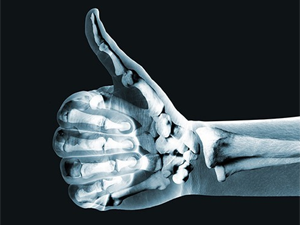NEWS
Synthetic 3D-printed material helps bones regrow

We knew this material had great mechanical properties and it was very easy and rapid to 3D print," said study author Adam Jakus, a researcher at Northwestern University, during a conference call with reporters.
Human trials using the biomaterial, called Hyper-Elastic Bone (HB), could begin in the next five years, according to the research team from Northwestern University.
"Its biological effects in the outcomes we observed directly were quite astounding."
The material is "made mostly of a ceramic, which contains mineral found in teeth and bones, and polymer, both of which are used in the clinic," said the study in Science Translational Medicine.
Unlike bone grafts, which are more costly, more brittle and risk being rejected in the patient's body, the biomaterial could be printed into many shapes and cut, folded, and sutured to fit on demand, according to the report.
This work represents what could be the next breakthrough in orthopedic, cranial facial and pediatric surgery when it comes to repairing and regenerating bone in bone to soft tissue defects
According to medportal.ru, biomaterial has already been tested on animals, and no infection, the opposite effect has been observed.
Researchers hope the material will one day offer personalized implants for a range of bone injuries, including spine, dental, reconstructive, and bone cancer surgeries.
Over the next 5 years, patients will begin trials of the artificial bone material, scientists said.





